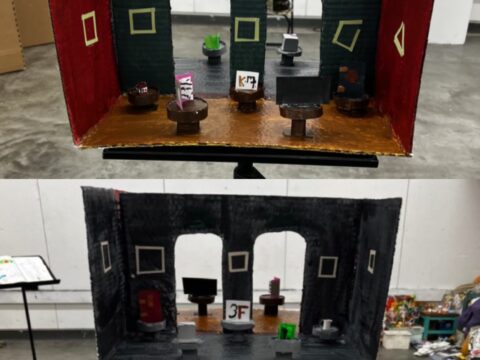
Have you ever wondered why paper bends in weird ways? I certainly have. I never thought that folding would be a complex phenomenon. As I experimented with different materials to fold, it caught my interest in learning more about folding, including techniques and different kinds of folds.

Plates: Folding plates was honestly not my favorite material to fold at first, but as I continued to experiment with it, I found it very cool. I was struggling to make a sphere out of them, because 1, I did not know how to connect the points together, and 2, I thought the plates were going to break. After figuring it out, I managed to create more sculptures with them. Like this tower.

Face Folding: Folding our faces was a favorite project of mine! After gaining some experience on different types of folds (EX: Valleys & Mountains), I was able to use those techniques and create different formations of my face. Something I wish I would’ve done differently about the folds, is probably make them different sizes. I could’ve made the folds so intricate that you’d have to look up close to see what kind of folds and creases are there.

Wet Creasing: The wet creasing folds were my favorite out of the three. Incorporating an alternate material to work with paper was very entertaining to mold. With these pieces, I kind of went free reign with them, as I didn’t have a set plan on what image I wanted to make. Instead, I scrunched up the paper, and saw which parts of the wet paper could give me a unique crease fold.
Overall, trying to fold different kinds of materials has really opened my eyes to how sophisticated it is! I thought it was only about bending, but now I see it’s a lot more than that. You need to know more about the material than just how to fold it. For example, the direction of the connections in the paper affects how it folds.


